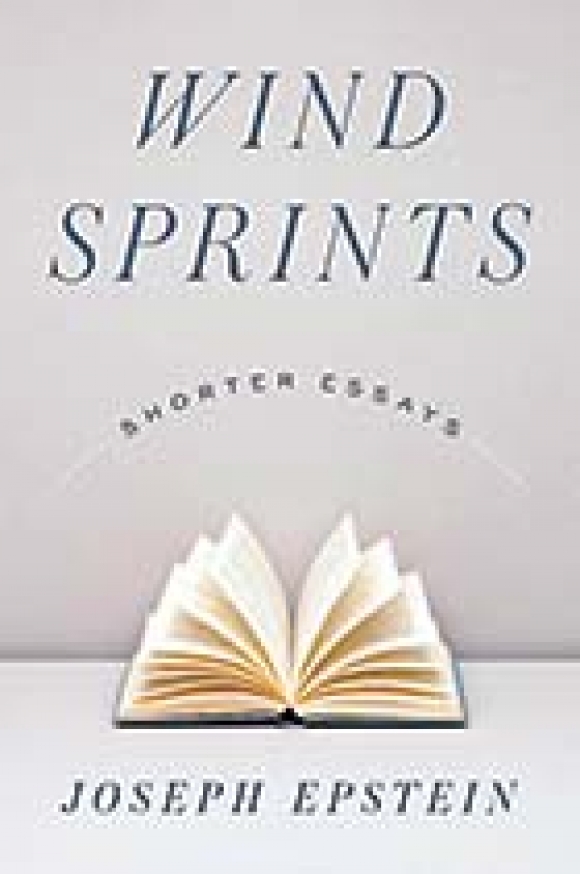I’ll say it: Epstein is the greatest living American essayist

Most of us like lists: “The 100 Greatest Novels of the Twentieth Century,” “The Ten Best Movies of All Time,” “The Top Five Barbeque Eateries in North Carolina,” and so on. We peruse such lists, mentally congratulating the choices we approve, shaking our heads over those we don’t, and bemoaning certain personal favorites that never even made the cut.
Were I to comply a list of the 10 greatest living American essayists, I would immediately encounter difficulty. I just looked up one such list online and found that only three of the 10 writers were familiar to me. I write essays, I read them and teach them, but obviously there are too many writers in this genre for me to track.
So I am going out on a limb here when I declare Joseph Epstein the greatest living American essayist.
Since 1974, Epstein has written more than 25 books, most of them collections of essays. He has covered a wide variety of topics: his personal life, the lives and works of dozens of authors, sketches in memoriam of colleagues and friends, social critique. His prose is as graceful as a gull’s flight, his wit abundant on every page, his humor wry.
In his latest collection, Wind Sprints: Shorter Essays (Axios Press, 2016, 608 pages, $24), Epstein delivers well over a hundred essays, all of them between 800 and 900 words. In his “Introduction,” Epstein points out that magazines now want shorter pieces than they did 20 and 30 years ago. With a slightly rueful tone, he writes “Less is not necessarily more, but less is distinctly what is wanted.”
As Epstein notes in the “Introduction,” he composed many of the pieces in Wind Sprints for the Weekly Standard “under the rubric of Casual.” That rubric describes perfectly both the tone and the approach of these essays, addressing as they do matters as varied as cell phones, Chinese food, orchids, profanity, the death of his postman, Fred. Every essay, every paragraph contains the patent Epstein hallmarks: a keen eye for observation, a sympathy for the human condition coupled with an inability to “suffer fools gladly,” wit and humor.
Related Items
The best way to experience Epstein is not to read about him, but to read him. Here is an extract from his essay “HMS Punafor,” in which he blends the words pun and metaphor, and shows us how, as he says, “a really dopey metaphor can light up the sky:”
“Food is another fine field for punafors. ‘The butcher, in giving us this chili recipe,’ someone once said in my presence, ‘didn’t give us a bum steer.’ At a restaurant that served especially large portions, I heard a novelist I know say, ‘They certainly don’t spare the horses here,’ to which his companion, quite properly, rejoined, ‘Let’s hope they do.’ A supermarket in my neighborhood ran an ad in the local press that announced, ‘We want your feedback.’ (Would it, if we returned it, give us back our money?) A friend not long ago said that she ‘could eat salad till the cows come home.’ As a carnivore, I felt called upon to reply that ‘I on the other hand could eat cows till the salad comes home.’
“Ain’t language a gas, a groove, the very first wonder of the world? No on, surely, is ever likely to develop a more efficient form of miscommunication, no way.”
For all of his writing life, Joseph Epstein has shown readers that language truly is a gas, a groove, the first wonder of the world. As for miscommunication, Epstein may be right, but you won’t find that miscommunication in any of his essays.
So Wind Sprints I highly recommend. If you’re already a fan of Epstein, then you are in for a treasure box of delights. If you’re a newcomer, this book with its short and amusing pieces is the ideal place to shake hands with him.
•••
For years in my reading, most recently when revisiting Pat Conroy’s My Reading Life, I have encountered references to Anthony Powell’s 12 novel magnum opus, A Dance to the Music of Time. Daunted by the sheer size of this Alpine project — the novels together run to about 3,000 pages — I resisted attempting the climb, certain that I would either fail or else become so hooked that I would be reading the same author for months on end.
A rereading of parts of the Conroy book with its descriptions of A Dance — Conroy read and discussed parts of the book to a dying friend over the phone — took me to the public library. A Dance is broken into four movements, that is to say, four volumes, each containing three novels. Volume One had gone missing, and since I assumed, correctly, that I should be able to read any of the novels individually, I began with Volume Two and having completed that, have now gone back to Volume One.
These novels offer a prose style — clean, elegant, sharp — rarely seen these days. Thankfully the first-person protagonist, a writer named Jenkins, frequently reminds us of the identity of those around him, for the cast of characters numbers in the hundreds — I keep meaning to print out an online guide. The social mores of the 1930s — the concern of Volume Two — surprised me as Jenkins recounts many divorces and strange love affairs.
Family distractions and work have slowed my pace, but I am now nearing the end of the first novel in Volume One. Ora pro nobis, dear reader.
(Jeff Minick is a writer and teacher. He can be reached at This email address is being protected from spambots. You need JavaScript enabled to view it..)









